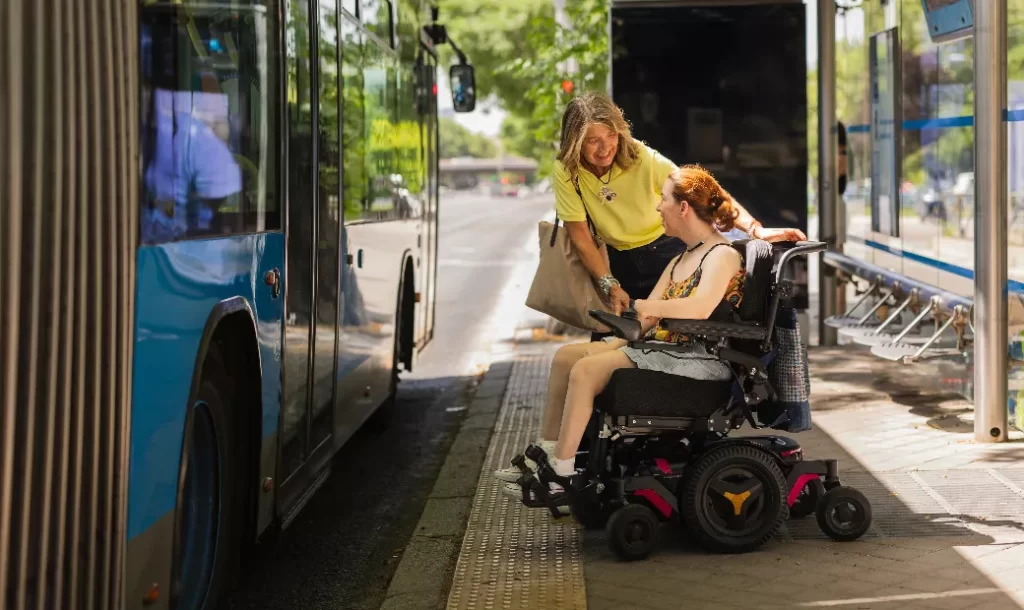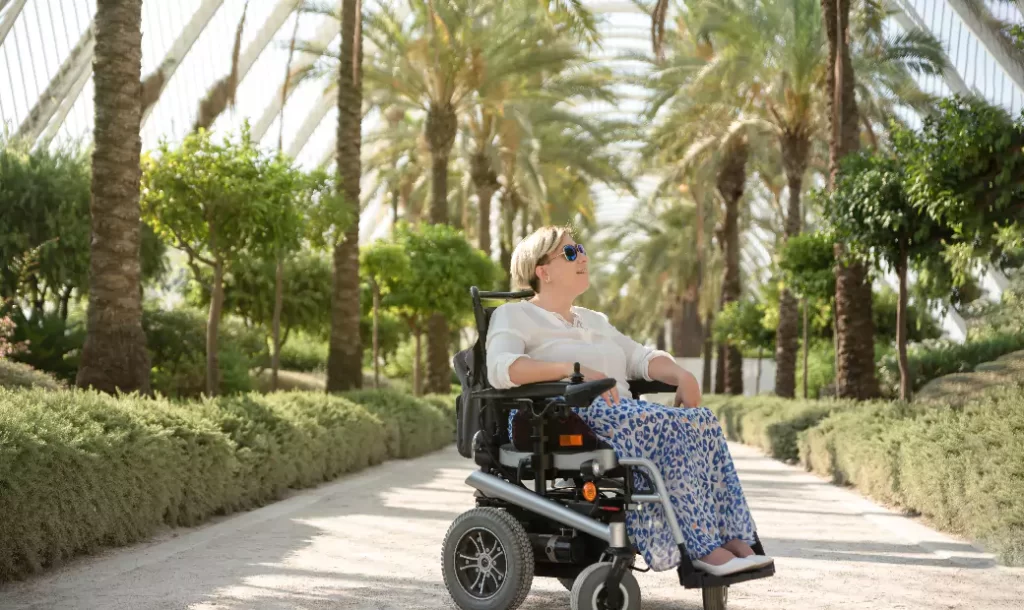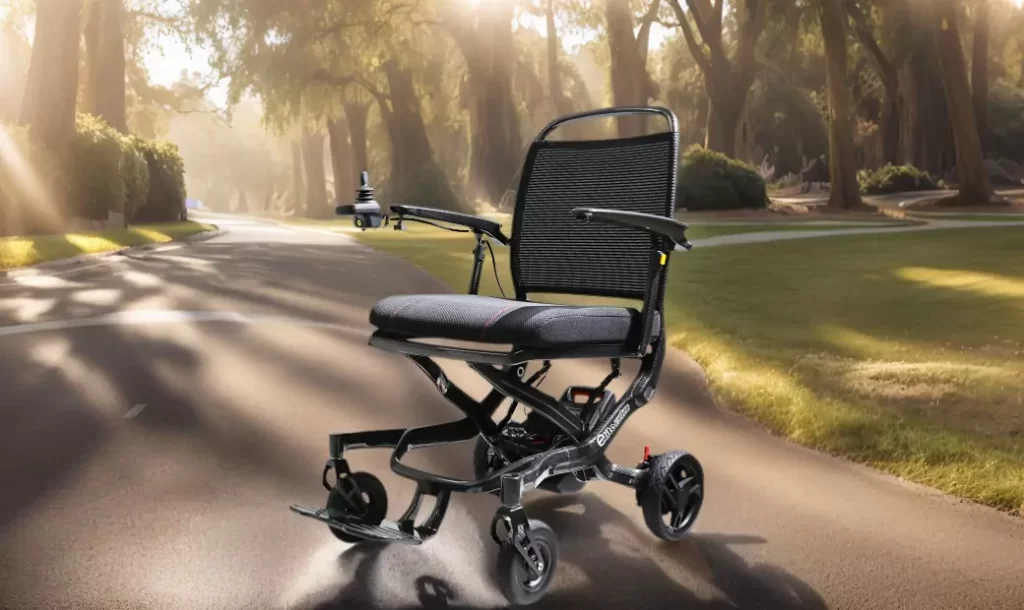Contact Us
The Untapped Potential: Why Motorized Wheelchair Accessibility is a Growing Market for Tourism
2025-10-14
Introduction
In recent years, inclusive tourism has gained global attention as societies move toward accessibility and equality. Yet, one segment remains underdeveloped — motorized wheelchair tourism.
Millions of travelers around the world use electric or power wheelchairs daily, whether due to disability, mobility limitations, or aging. However, few tourism destinations and service providers have fully addressed their needs. From accessible transportation to barrier-free hotels and sightseeing routes, the gap between intention and execution remains wide.
For the rehabilitation equipment industry, especially companies such as INTCO Medical, this presents both a challenge and an opportunity. By promoting accessibility through advanced mobility products and facility upgrades, the tourism industry can tap into a massive, loyal, and growing customer base — while rehabilitation manufacturers can expand their impact beyond hospitals and homes into everyday travel.

A Market Waiting to Be Explored
The Economic Value of Accessible Tourism
According to data from the World Tourism Organization (UNWTO), accessible tourism could generate over $100 billion annually worldwide. In Europe alone, the accessible travel market is expected to exceed €88 billion by 2025. Studies from ADA Southeast show that travelers with disabilities — including wheelchair users — contribute nearly $50 billion to the U.S. travel economy each year.
These figures illustrate that accessibility is not a niche demand — it is a substantial segment of the mainstream travel economy. Moreover, the number of people requiring mobility assistance is steadily increasing due to population aging. By 2050, the global elderly population will double, creating a sustained need for wheelchair accessible travel solutions.
The Spending Power of Mobility Travelers
Travelers using motorized wheelchairs often spend more per trip than average tourists. They seek:
-
Reliable comfort and safety — high-standard rooms, seamless accessibility, dependable transport.
-
Convenience and independence — minimal physical barriers, easy charging options for power chairs, trained service staff.
-
Meaningful experiences — inclusive sightseeing, community engagement, and accessible adventure.
They are also strong advocates. A positive experience often leads to repeat visits and online reviews that influence thousands of peers, magnifying the economic impact far beyond a single purchase.

Key Areas for Accessibility Improvement
To attract motorized wheelchair users, the tourism ecosystem — from destinations to service providers — must improve in three primary areas: infrastructure, services, and communication.
Destinations and Attractions
Accessible tourism starts with barrier-free infrastructure.
-
Smooth pathways and ramps: Attractions must ensure that all primary routes are paved, stable, and wheelchair-friendly. Slopes, curbs, and uneven surfaces should be minimized.
-
Entrance accessibility: Ramps and automatic doors should be standard for major public venues.
-
Interactive accessibility: Museums and theme parks can enhance experiences by ensuring exhibits, screens, and buttons are reachable from seated height.
-
Charging stations: As electric wheelchairs require regular recharging, public charging points are becoming a vital part of accessible design.
By improving these facilities, destinations can transform accessibility from a compliance requirement into a competitive advantage.
Hotels and Accommodation
The hospitality sector plays a central role in motorized wheelchair tourism. Beyond simply having “accessible rooms,” hotels must ensure real usability:
-
Doorways should be at least 90 cm wide, with enough space to turn a power wheelchair.
-
Bathrooms should feature roll-in showers, grab bars, and adjustable mirrors.
-
Power outlets should be conveniently located for wheelchair charging.
-
Staff should receive accessibility training, learning how to assist guests respectfully and efficiently.
Hotels that invest in such improvements not only meet regulatory standards but also win loyal, long-term customers. As noted by Be My Eyes Business Blog, “accessible rooms are not an obligation — they are an untapped growth strategy.”
Transportation and Mobility
Transportation remains one of the biggest challenges for travelers using motorized wheelchairs.
-
Accessible taxis and shuttle vans with ramps or lifts can make city travel more convenient.
-
Airports and railway stations should provide clear signage, barrier-free boarding, and specialized assistance.
-
Tour operators can develop customized accessible packages with vehicles equipped for electric wheelchair users.
These practical measures greatly enhance the overall travel experience and encourage repeat visits.
Successful Practices from Around the World
A number of destinations and platforms are already leading the way in accessible tourism:
-
Wheel the World: An online platform mapping accessible hotels, routes, and experiences for travelers with disabilities.
-
AccessibleGO: A booking site that filters accommodations based on verified accessibility features.
-
Tokyo’s Barrier-Free Legacy: After the 2020 Paralympics, many Tokyo hotels retained their accessible facilities, making the city one of the most wheelchair-friendly in Asia.
-
Greece’s Seatrac Project: The installation of more than 200 self-operated wheelchair tracks on beaches allows independent access to the sea.
-
Laredo, Texas: Recently certified as an “Inclusive Travel City,” promoting verified accessible attractions and accommodations.
These examples prove that investing in accessibility pays off — not just socially, but economically.
The Role of Rehabilitation Equipment Manufacturers
Companies like INTCO Medical, known for innovation in mobility and rehabilitation devices, are uniquely positioned to support the rise of accessible tourism. By providing high-performance, user-friendly products such as electric wheelchairs, mobility scooters, and assistive accessories, INTCO empowers travelers to move freely and confidently.
INTCO’s Related Solutions
-
Motorized Wheelchairs (e.g., STAR, E-LITE series): Lightweight, durable, and designed for long-distance travel with reliable battery life.
-
Mobility Scooters (e.g., E-CARY series): Ideal for sightseeing and short-range mobility within resorts or city centers.
-
Ergonomic Cushions and Support Systems: Enhancing comfort during extended travel or tours.
By integrating such products into the tourism ecosystem, destinations can rapidly raise their accessibility level — making travel easier, safer, and more enjoyable for everyone.

Opportunities and Challenges Ahead
While the potential of wheelchair accessible travel is clear, several challenges remain:
-
Investment Costs: Infrastructure upgrades and staff training require upfront funding.
-
Maintenance and Quality Control: Accessibility must be maintained, not just installed once.
-
Standardization Issues: Global consistency in accessibility standards is still lacking.
-
Awareness Gaps: Some travel providers underestimate the demand for accessible experiences.
Nevertheless, the opportunities far outweigh the obstacles. As UNWTO emphasizes, “accessible tourism benefits not only persons with disabilities but society as a whole.” It improves safety, comfort, and inclusivity for all travelers — parents with strollers, elderly tourists, and even those with temporary injuries.
Future Outlook: From Obligation to Innovation
Looking ahead, accessibility will evolve from a “compliance requirement” to a core innovation driver in the travel industry. Several trends will accelerate this shift:
-
Smart Technology Integration: The use of IoT sensors, AI navigation, and real-time accessibility mapping.
-
Digital Verification Platforms: Verified accessibility listings (e.g., “destination verified” systems) will enhance transparency and trust.
-
Government Incentives and Standards: Legislation such as the European Accessibility Act (EAA) encourages uniform design and business adaptation.
-
Cross-Sector Collaboration: Partnerships between tourism operators, rehabilitation equipment providers, and government agencies will foster new business models.
As technology, policy, and social awareness converge, the next decade will see motorized wheelchair tourism emerge as one of the fastest-growing niches in global travel.
Conclusion
Accessible tourism is no longer just a matter of social responsibility — it is a business opportunity worth billions. By welcoming travelers using motorized wheelchairs, destinations and hospitality providers not only practice inclusion but also gain access to a powerful and loyal market segment.
In essence, the future of travel lies not just in speed or luxury, but in accessibility for all. The world is ready to move — and with the right infrastructure and innovation, no traveler should be left behind.
References
-
UNWTO. (2024). Accessible travel “a game changer” for destinations and businesses. Retrieved from https://www.unwto.org
-
ADA Southeast. (2024). $50 Billion in Annual Spending Highlights Impact of Travelers with Disabilities. Retrieved from https://adasoutheast.org
-
ISO. (2022). What’s Trending in Global Tourism. Retrieved from https://www.iso.org
-
Be My Eyes. (2025). Accessible Rooms in Hotels: A Room Overhaul is Not a Necessity. Retrieved from https://www.bemyeyes.com
-
FutureDataStats. (2025). Accessible Travel Market Size & Growth Forecast. Retrieved from https://www.futuredatastats.com


